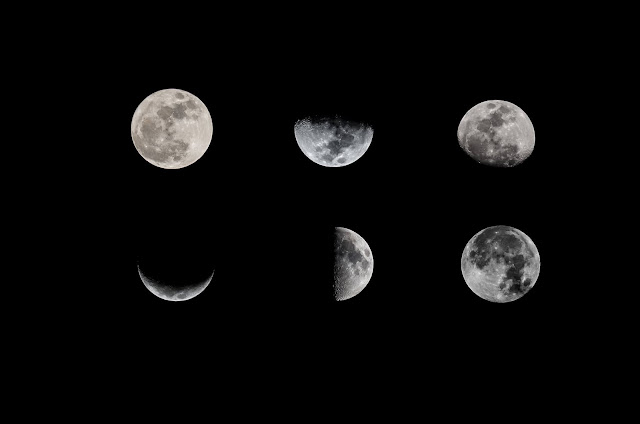Moon Phases Is So Famous, But Why?
The moon phase or Moon cycle is the phase of the
Moon as seen from Earth. The moon cycle can be divided into four phases namely,
New Moon, New phase, First Quarter, Full Moon, and Last Quarter. The lunar
phase is most of the time termed as Moon Phase I. During New Moon, the Moon
appears almost full, with a faint crescent on the horizon. The Moon appears to
move closer to the horizon as it gets closer. This indicates the presence of a
new and different planet in our solar system.
New Moon - This is the first full Moon. The Moon
appears to be half-lit and brighter than usual. It is accompanied by secondary
and tertiary gibbous moonlets. In addition, there is a slight breeze.
New Moon - This Moon stage occurs when the Moon is
in its first quarter. It has the least effect on the Moon Phases. It does not
cause any significant movement of the Moon during this time. The Moon remains
mostly in the same place and does not get disturbed by any heavenly body. It is
also not visible in the skies at this time. The only occasion when the Moon
becomes visible is during the New Moon.
First Quarter - This is the phase when the Moon is
about to make the closest approach to the Earth. The Moon appears to wax and
wane during this phase. The Moon also waxes while it is passing through the
Earth's shadow. There are no significant changes seen on the surface of the
earth during the First Quarter. However, the softness and dimness of the sky
are detectable at many locations across the globe.
Gibbous Moon - This phase occurs during the final part of the first quarter. The Moon begins to gradually move from the west towards the east at this phase. It reaches its western crescent stage at the end of the second month of this phase. During this phase, the Moon begins to slowly move back into the north-northeastern direction. No significant effects are seen on the surface of the earth.
Second Quarter - During the second quarter, the Moon
starts to slowly move towards the west. The Moon turns darker as it moves
towards the edge of the solar limb. The Waxing Gibbous Moon phases occur at the
end of the lunatic phase of the Moon. It is darkening and is sometimes called
the "dusk Moon". As the Moon approaches the full Moon, there is a
slight increase in the Moon Phases.
Third Quarter - When the new phase occurs, the Moon
is about halfway through its daily revolution. It is a new quarter when the moon reaches perigee - the edge of the solar limb. When the perigee is reached,
the full moon begins to set. So, this is a period of maximum influence.
Fourth Quarter - The fourth quarter of the Moon
happens when the Moon is about to move into its true lunation or new phase. The
Moon Phases that occurs during this phase includes the Waning Gibbous Moon, the
First Quarter, the Mixed Phase, and the Prominence. When the Moon is in the
proper lunar cycle it will be illuminated directly by the sunlight. When it
does not, then a waxing crescent Moon will be illuminated and it will appear
smaller and darker than it should be.
First Quarter - This is the first full Moon of a
new moon cycle. The Moon is not fully illuminated, so it appears reddish or
yellow in color. There is no full Moon on the New Moon. During the First
Quarter the Moon Phases are as follows: Waning Gibbous Moon - illumination
lasts for two weeks; the Moon is completely illuminated during the first week,
and during the last week, it becomes invisible. New Moon - This is the first day
that the Moon is fully illuminated and the Moon Phases is as follows: Warning
Gibbous Moon - illumination lasts for four weeks; the Moon is completely
illuminated during the first week, and during the last week it becomes
invisible.
Second Quarter - The second quarter of the Moon's
orbit is associated with the Spring equinox. It occurs when the Moon is far
from the Earth and therefore out of alignment with the Earth's orbit plane. In
its travels around the earth, it causes the Moon to dip slightly north and
elongate slightly south. The full Moon only occurs during this phase.
Third Quarter - The third quarter of the Moon's orbit is associated with the Summer Solstices. The Moon begins to move away from the ecliptic plane as it approaches the Spring equinox. It will reach the greatest illuminated region during the last quarter of the Moon's journey around the Earth. The gibbous mark - the outer edge of the Moon's illuminated surface - is the lowest point where the Moon can be seen, while the Moon appears to be nearly spherical. The gibbous mark also occurs at the southernmost edge of the natal chart.

